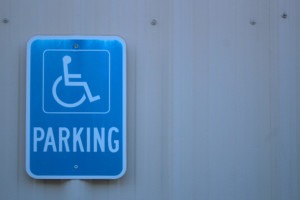
Various laws around the world require public accommodations to provide goods and services to people with disabilities on an equal basis with the rest of the general public.
Some of the laws and standards for accessibility include:
- Americans with Disabilities Act (ADA)
- Americans with Disabilities Act Accessibility Guidelines (ADAAG)
- Federal Fair Housing Act (FFHA)
- Fair Housing Act Design Manual
- Architectural Barriers Act (ABA)
NOTE: The ADA applies to all new construction, and also requires that barriers to access be removed from existing buildings, where readily achievable. Most building codes and laws aren’t applied retroactively, which makes the ADA unique. An accessibility inspection is also referred to as an ADA inspection.
Benefits of an Accessibility Inspection
Businesses benefit from the patronage of all people. Those who own, lease, lease out, or operate places of public accommodation should have as a goal the identification and reduction of physical barriers to this patronage. An accessibility inspection will provide you with the information you need to enable people with disabilities to be provided goods and services at an existing commercial property on an equal basis as the rest of the general public.
Did you know that people with disabilities are the largest minority group in the country? Census figures estimate that 56.7 million, or one in five Americans, has a disability. This includes people with mobility, hearing, vision, speech, or cognitive impairments.
Additionally, many commercial accessibility issues are only remediated through civil litigation. The findings in the accessibility inspection report will not only provide information related to the accessible features, or lack thereof, but can also help clients avoid unexpected legal claims regarding a building’s accessibility. Just Google “drive-by lawsuit.”
Making existing commercial facilities accessible is an increasingly important priority not only for equality and safety, but also for legal reasons.
What is an Accessibility Inspection?
An accessibility inspection covers the most common technical accessibility deficiencies and barriers including:
- parking;
- building entrances;
- route of travel and walking surfaces;
- ramps, curb-cuts, and curb-ramps;
- clear floor space for wheelchair maneuverability;
- protruding objects;
- drinking fountains;
- restrooms; and
- elevators.
This inspection service may be ordered in conjunction with a standard commercial inspection or offered as a separate, stand-alone service. Every project is different. Search locally to find an inspector that can help determine exactly what would best serve your needs or contact us.
Additional Resources:
Take CCPIA’s free, online Commercial Inspection Standard Accessibility Inspection Course
Scope of ADA Title III for Accessibility Inspections

